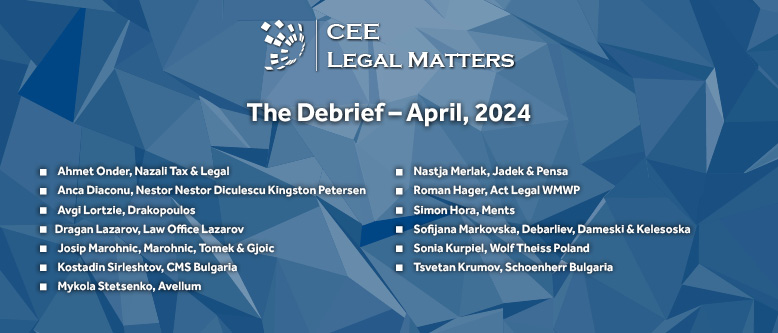Following almost four years of consultations and debates, on March 29, 2023, Romania’s Government has submitted for the adoption of the Senate the draft law on the Code of Land Planning, Urbanism and Construction (the “Urbanism Code”).
We note that the draft law on the Urbanism Code had been submitted to the Senate for approval in emergency procedure. The urgency of adopting the Urbanism Code as soon as possible is justified by two underlying reasons:
- reforming the regulatory framework in the field of urban planning is a priority set out in the Government Programme for the years 2021-2024;
- the need for codification and simplification of legislation to support the transition to green buildings, more specifically the entry into force of the Urbanism Code is also a component of the
National Recovery and Resilience Plan (“PNRR”); this was a milestone that was supposed to be achieved in the first quarter of 2023; as one can see, Romania is unfortunately behind schedule.
The Urbanism Code aims to correlate, simplify and codify in a single piece of legislation multiple normative acts in the field of spatial planning, urbanism and constructions. The need for a codification of the concerned legislation results from several factors, such as the insufficient correlation of some normative acts and the lack of clarity of certain provisions, combined with their interpretability.
In its draft form, the main objectives of the Urbanism Code are the following:
(i) increasing the efficiency of access to and transparency of spatial and urban planning documents for all users;
(ii) simplifying and digitalizing the process of endorsement and approval of spatial planning and urban planning documents and the process of authorising the construction or demolition works;
(iii) increasing the use of energy efficient and sustainable solutions in constructions.
Despite having an approved emergency procedure, the Senate did not extensively debate the draft law on Urbanism Code, but rather only issued several endorsements. No report was issued on the same. The Senate tacitly approved the draft law on Urbanism Code, which was ultimately forwarded to the Chamber of Deputies as decision-making body on June 19, 2023. The Chamber of Deputies submitted it for report to the Committee on Public Administration and Regional Planning and for endorsement to several committees.
This seems however to be the moment where the process came to a standstill. The draft law on Urbanism Code received endorsements from only several of the committees it has been submitted to. Furthermore, it has only briefly been on the agenda of one meeting of the Committee on Public Administration and Regional Planning in October 2023, but no additional steps have been taken since.
Relevant topics for renewable energy investors
As previously mentioned, one of the main objectives of the Urbanism Code is to simplify the bureaucratic process. As at the moment the deadlines for various endorsements and approvals vary and may span over longer periods of time, investors in renewable energy are keeping a keen eye on any changes that may benefit them, or on the contrary, be detrimental to their investments.
And while the simplification of the bureaucratic process is sought after, some provisions sparked concern, as they seem to be doing the contrary.
Thus, one of the provisions that presents the highest degree of interest, reluctance and worry from the side of the investors in renewable energy targets the detailed urban plan (“PUD”). In this sense, the draft law on the Urbanism Code introduces the obligation for renewable energy projects to obtain a PUD. While the authorising process for such projects can already be lengthy, the obligation to obtain the PUD triggers additional deadlines in the authorisation of projects. A PUD also means that a public consultation concerning the project must be carried out. Just this process would add another month to the authorization process, not taking into account the bureaucratic process of obtaining the actual PUD.
Therefore, in the process of trying to encourage investments and make their situation easier, the legislators have, at least for now, introduced an obstacle for them.
While it does impose an additional obligation for investors, the draft law on the Urbanism Code could also use the opportunity to ensure an actual streamlining of the authorisation process for renewable energy projects. In this regard, certain facilities or exemptions could be provided.
These facilities granted to investors in renewable energy do not stem out of the entitlement of the latter, but rather from European Union indications, namely from the Renewable Energy Directive as amended in 2023 (“RED III”). One of the main goals of RED III is the simplification of the authorization process for renewable energy projects, keeping it under a year. Taking this into account, it is only natural that investors will put their hopes into the Urbanism Code to provide the necessary framework for this.
As such, the legislators were expected to have used the draft law on the Urbanism Code to ensure this simplification in a concrete manner, not just in the statement of reasons.
Possible courses of action in this regard are exempting renewable energy projects from obtaining certain certificates that are otherwise required for other projects. In this manner, renewable energy projects may be exempted from the obligation to obtain a zonal urban plan (“PUZ”) or an environmental impact assessment. At the same time, if the need for such certificates or studies arises, the prioritisation of the same for renewable energy projects could be considered.
And while a uniform applicability of legislation can indeed streamline the authorisation process and offer a certain degree of predictability, the draft law on the Urbanism Code could still suffer amendments during the debates in the Chamber of Deputies.
Conclusions
Although a vital piece of legislation, both from the perspective of citizens and investors, as well as given Romania’s obligations instilled through PNRR, the matters in this direction are moving at a rather slow pace.
Nevertheless, the draft phase of the Urbanism Code is an opportunity to ensure that its final version will be the one bringing the most added value to the current situation. The debates in Parliament that are still down the road, and which are open to interested stakeholders leave the floor open for discussions and for improvements.
Thus, it only remains to be seen what final shape the Urbanism Code will take and when it will ultimately be adopted.
By Gelu Maravela, Founding Partner, Carmen Banica, Associate, Sonia Benga, Associate, MPR Partners


























